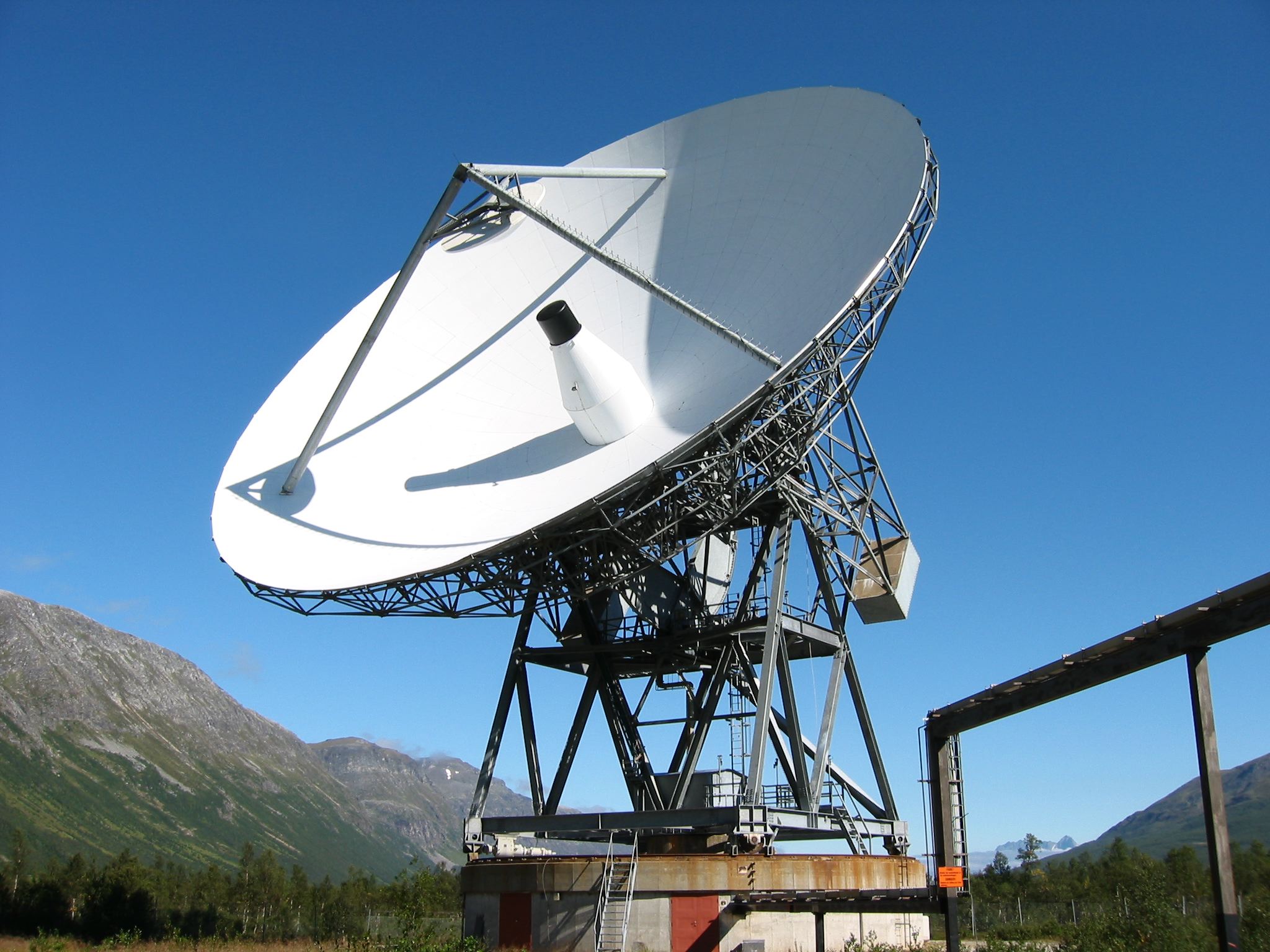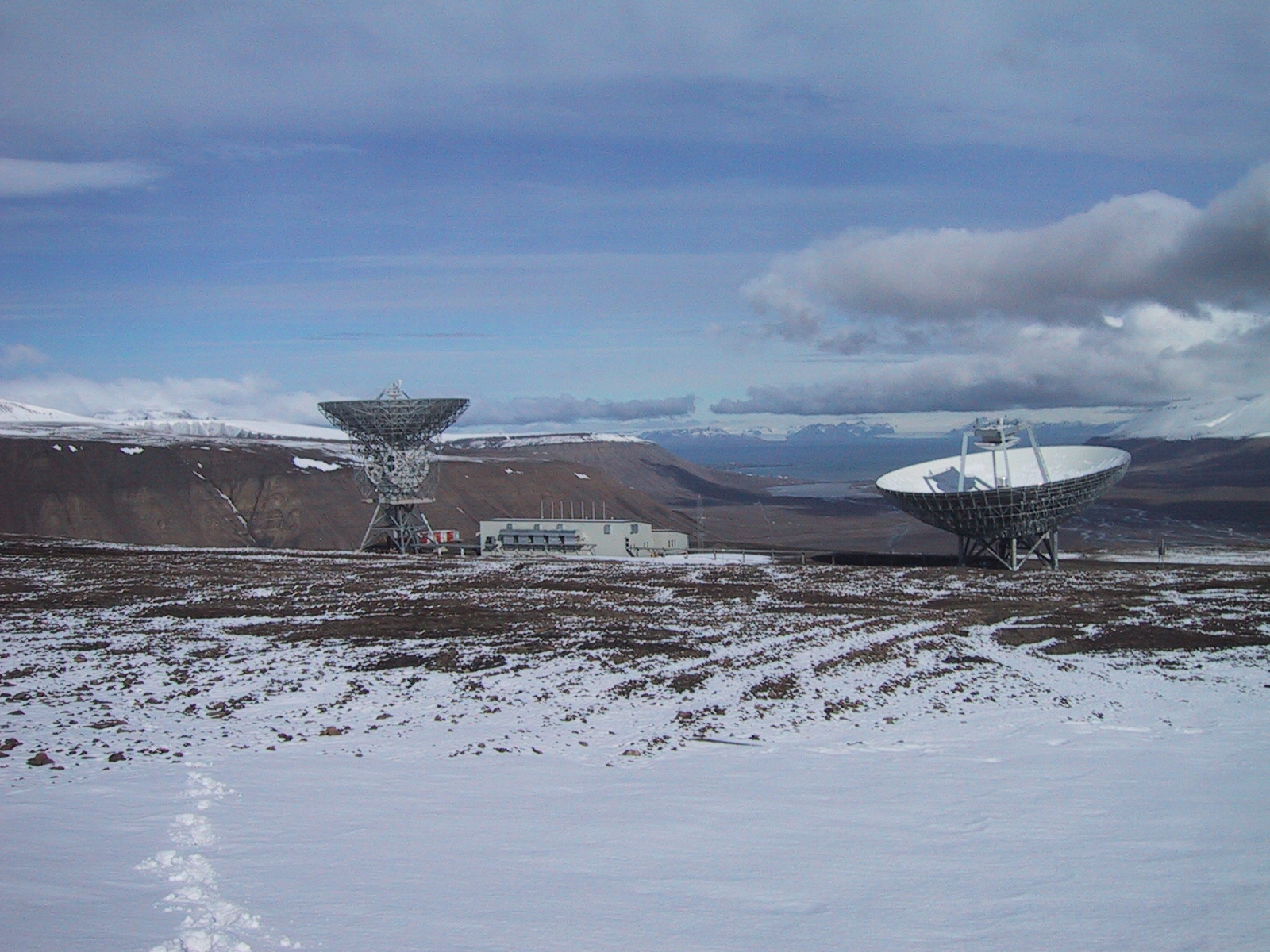General Info
18th_eiscat_symposium
Welcome page
Welcome to the 18th EISCAT symposium which will be held from 26th to 30th May 2017 at National Institute of Polar Research (NIPR), Tokyo, Japan.
The EISCAT Scientific Association is an international research organization operating three incoherent scatter radar systems and an ionospheric heating facility in northern Scandinavia and Svalbard. The EISCAT radar systems have been widely used to study coupling processes in solar-terrestrial system, in particular, auroral and ionospheric physics and fundamental plasma physics. The EISCAT is funded and operated by research organizations of China, Finland, Japan, Norway, Sweden and the United Kingdom (collectively, the EISCAT Associates), and also France, Russia, South Korea, and Ukraine (as affiliate members). The EISCAT Associates organize a biennial scientific symposium, usually rotating between the member countries. The 18th EISCAT symposium will be held in connection with the JpGU-AGU joint meeting in Makuhari, Japan (from 21st to 25th May 2017) and the 15th MST (Mesosphere/Stratosphere/Troposphere) radar workshop to be held in NIPR.
Update history:
2016/Jun/30 first circular
2017/Feb/14 Deadline of abstract submission was extended.
Contact:
eiscat-sympo_at_nipr.ac.jp
Sponsored by NIPR, ISEE Nagoya University, EISCAT Scientific Association, SGEPSS, and "Pulsating Aurora Project (JSPS KAKENHI)"
Important dates
Important dates in 2017
2016-12: Pre-Registration and Abstract Submission open
2017-03: Pre-Registration finishes
2017-04: Release of Programs of presentation on the web
2017-05: Release of Abstract PDFs on the web
26 - 30 May, meeting days
Abstract submission
You can submit your abstract via this web page.
If you have already made your account for the EISCAT18 and MST15/iMST2, please visit here.
Deadline of abstract submission: February 15, 2017
The deadline was extended to February 28, 2017.
Abstract submission was closed.
Session description
Registration
Deadline of registration: March 30, 2017
You can make registration and its payment via this web page.
If you have already made your account for the EISCAT18 and MST15/iMST2, please visit here.
Registration fee (online):
Regular Participant: 25,000 JPY
Student participant: 20,000 JPY
Onsite registration fee (26-30 May, 2017):
Regular Participant: 28,000 JPY
Student participant: 23,000 JPY
(Note: The registration fee includes lunch, coffee/tea, joint banquet, and conference science sessions access.)
There will be no refund for cancellation/withdrawal received after May 18, 2017. For cancellations before May 18, 2017, a cancellation fee may be applied.
Author instructions and logistics
For oral presentation:
The time allocated for each speaker includes a 3-minute question and answer.
LOC staff prepares a laptop (Windows OS) for oral presentations in the Auditorium. Authors are kindly asked to upload your presentation file to the laptop in advance (during coffee break or lunch). Authors are able to use their own laptop with Mac or Linux OS if necessary.
For poster presentation:
Poster board size: 1170 mm (Height) x 870 mm (Width)
(B1 size (1030 mm (H) x 728 mm (W)) is recommended.)
At the session room (Auditorium), you can drink only water from a plastic bottle.
Symposium program
2017-05-26 (Fri): Registration and normal session
2017-05-27 (Sat): EISCAT and MST WS joint session 1
2017-05-28 (Sun): Excursion
2017-05-29 (Mon): Joint session 2; Joint banquet in the evening
2017-05-30 (Tue): Normal/joint session & closing
2017-05-31 (Wed): (session of MST WS)
2017-06-01 (Thu): Tour to MU radar/JMA (option)
| DAY | May 26 (Fri) | May 27 (Sat) | May 28 (Sun) | May 29 (Mon) | May 30 (Tue) | May 31 (Wed) | |
|---|---|---|---|---|---|---|---|
| AM1 0900-1045 |
Registration | E3+M3 | Excursion | E1+M1 | E2+M2 0900-1015 |
M5 M6 |
|
| AM2 1100-1245 |
E5 | E3+M3 | E1+M1 | 1030- M4 |
1045- E4 |
M6 | |
| PM1 1345-1530 |
E6 | E3+M3 | E1+M1 E2+M2 |
M4 M5 |
E4 M7 |
M6 | |
| PM2 1545-1730 |
E7 | E3+M3 | E2+M2 | M5 | M7 | M6 | |
| PM3 1800-1930 |
Poster E3+M3, E5,E6,E7 |
Banquet 1900-2100 |
Poster E1+M1,E2+M2 E4,M4,M5,M6,M7 |
M8 | |||
Session description
Plans of excursion
You can choose one of the following two plans!
Please note that excursion fee is charged extra (see below), not included in registration fee. In order to estimate the number of participants for each excursion, please fill out a questionnaire in the "Your personal information page" by 28 February, 2017. The registration page will be opened after 15 February, 2017.
Plan 1 --> Cancelled!
![1[1]_R.jpg](/~eiscat/about/1%5B1%5D_R.jpg) Dynamic Tokyo -- This tour visits six popular sightseeing spots in Tokyo.
Dynamic Tokyo -- This tour visits six popular sightseeing spots in Tokyo.
Fare: 13 000 YEN
Meeting time: 07:45
Meeting place: TBD
Transportation: By Bus
Estimated interval: 10.5 hours
Meal: Lunch included
Itinerary:
Tachikawa (08:00) -> Tokyo Tower -> Happo-en garden (Japanese tea ceremony experience) -> (lunch) -> Imperial Palace Plaza -> Senso-ji Temple in Asakusa -> Sumida River cruising -> Ginza(See from the bus window) -> Tachikawa (18:30)
Plan 2
 Historical Tokyo Sakagura -- This tour visits Ishikawa-Shuzo. Ishikawa-Shuzo is a sake brewery with a long and distinguished history.
Historical Tokyo Sakagura -- This tour visits Ishikawa-Shuzo. Ishikawa-Shuzo is a sake brewery with a long and distinguished history.
Fare: 5250 YEN
Meeting time: 10:45
Meeting place: TBD
Transportation: By Train and on Foot
Transportation expenses: 340 YEN (Tachikawa-Haijima)
Estimated interval: 5 hours
Meal: Lunch included with Tokyo local beer and sake
Itinerary:
Tachikawa (11:00) -> Ishikawa Shuzo(12:00-13:00) -> lunch (with beer and sake)(13:00-15:00) -> Tachikawa (16:00)
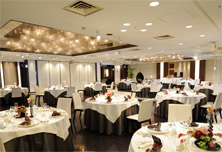 EISCAT-MST15/iMST2 joint banquet
EISCAT-MST15/iMST2 joint banquet
Date: 29 May 2017
Time: after the session (to be announced later)
Venue: Tachikawa Grand Hotel
Transportation: LOC will arrange direct buses from NIPR to the hotel just after the last session.
Fee: The banquet and the bus fees are included in the registration fee.
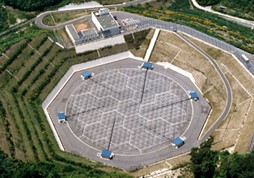 Tour to MU Radar
Tour to MU Radar
This tour visits the middle and upper atmosphere radar (MU radar) that is a major observation facility in the Shigaraki MU Observatory of the Research Institute for Sustainable Humanosphere (RISH), Kyoto University.
Date: 01 June 2017
Meeting time: 12:30
Meeting place: JR Kyoto station HACHIJO exit, in front of "AVANTI building"
Estimated interval: approx. 5 hours
Meal: no
Note:
- Please come to the meeting place (i.e., JR Kyoto Station) by yourself. Travel costs to and from the meeting place are to be covered by each participant individually.
- We prepare the round-trip shuttle bus (free) between the Kyoto station and the observatory.
- You can join this tour within one-day trip from Tachikawa.
* If you enjoy traveling in Japan, it is recommended to use a special fare plan for the travelers from overseas, called "Japan Rail Pass". The cost for a 7-day Japan Rail Pass (29,110 yen), for example, roughly corresponds to the cost of a single return trip from Tokyo to Kyoto by the Shinkansen.
* For further details please visit MST15/iMST2 HP.
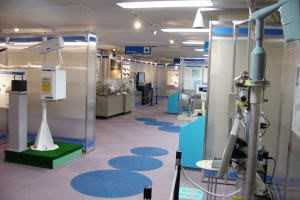 Tour to Japan Meteorological Agency--> Cancelled!
Tour to Japan Meteorological Agency--> Cancelled!
This tour visits the Japan Meteorological Agency. You can visit the operational center for forecast and observation, and the meteorological museum.
Date: 01 June 2017
Meeting time: 10:00
Meeting place: Lobby of Japan Meteorological Agency (JMA) 1st floor
Estimated interval: approx. 1.5 hours
Meal: no
Note:
- Please come to the meeting place by yourself. Travel costs to and from the meeting place are to be covered by each participant individually.
- It takes about one hour from Tachikawa station by train.
- For further details please visit here.
Session description
E1: RADAR and LIDAR TECHNIQUES
Keywords
Radar techniques, LIDAR, photometry, imaging
Conveners
Craig Heinselman, Takuo Tsuda, and Masaki Tsutsumi
Invited Speakers:
N. Saito and J. Vierinen
Session description
RADARs and LIDARs are two of the most powerful classes of instruments for remote sensing of the Earth's atmospheric and ionospheric environment. They provide continuous access to key physical parameters of the system in a spatially-resolved sense. A number of technological improvements have enabled significant enhancements in the capabilities of these systems. In particular, advances in transmitter modulation capabilities, antenna flexibility, spatial light modulation techniques, data acquisition methods, and detector technologies have all provided greater sensitivity and, at times, radically new observational modalities. In addition, proper exploitation of these capabilities has rested on advances in the mathematical underpinnings of the measurements. This session invites presentations in any of these areas as well as other uses of the technologies for scientific remote sensing.
E2: FUTURE INFRASTRUCTURE & FACILITIES (EISCAT_3D USER MEETING)
Keywords
EISCAT_3D, new facilities/instruments, atmospheric research (EISCAT_3D related)
Conveners
Hiroshi Miyaoka, Ian McCrea, and Craig Heinselman
Invited Speaker:
R. Varney
Session description
EISCAT_3D represents one of the biggest opportunities in the history of EISCAT, but also one of our biggest ever challenges. The possibility to replace the current mainland systems with new phased arrays offers a huge increase in capability and flexibility, enabling quasi-simultaneous observations over a wide area of ionosphere, while also facilitating observations with better temporal and spatial resolution than have ever been possible. The new EISCAT_3D radars will completely change EISCAT's mode of operating, with the possibility to run experiments serving the needs of multiple users simultaneously and the potential capability to modify the amount of system resources used by each one in a very dynamic way. Constructing and operating such a system will, however, involve a substantial learning process. This session, which replaces the EISCAT_3D Users Meeting for 2017, will cover all aspects related to EISCAT_3D, ranging from hardware and software specifications, through project planning, organization and governance, to the scientific programme of the new radars and their prospective modes of operation. In addition we invite contributions from users of similar facilities worldwide, whose experience promises to provide very useful perspectives for EISCAT_3D operations. Contributions are also encouraged from users of other types of observing instruments, especially in cases where there is expected to be a strong synergy with the operations and science of EISCAT_3D.
E3: IONOSHERE/THERMOSPHERE/MESOSPHERE
Keywords
Currents, Conductivities, irregularities, tides, GWs, PWs, LIDAR, PMSE, PMWE and meteors
Conveners
Ingrid Mann, Yoshimasa Tanaka, and Hitoshi Fujiwara
Invited Speakers:
A. Richmond and Y. Miyoshi
Session description
This session mainly focuses on physics and chemistry in the mesosphere, thermosphere, and ionosphere (MTI) from the polar to equatorial regions. For example, the coupling processes between plasmas and neutrals in association with auroral phenomena and between lower and upper atmospheric regions through atmospheric waves are important topics to understand features of the MTI region. These features also involve as important components mesospheric dust and ice, their link to meteors and their observation with radar. The long-term variations of the MTI region and the effects of solar activity on this region are also important issues. The presentations of observations with ground-based and/or space-borne instruments, in-situ measurements, theoretical studies, numerical simulations, and development of new instruments are invited in the session.
E4: AURORA and AIRGLOW
Keywords
aurora, airglow, radar, optics
Conveners
Mike Kosch, Satonori Nozawa, and Akira Kadokura
Invited Speakers:
T. Nishimura and K. Hosokawa
Session description
The aurorae are signatures of electron and proton precipitation and currents from the magnetosphere into the ionosphere. The thermosphere is a significant sink for electrical and particle energy stored in the magnetosphere. Airglow is a useful tracer for a variety of atmospheric phenomena, such as gravity waves and neutral winds. This session welcomes all experimental, modelling and theoretical contributions concerning the natural auroras and airglow. Both large-scale (e.g. conjugate auroras) and small-scale structures (e.g. black auroras) as well as supporting observations by non-radar techniques (e.g. LIDAR, spectrograph, riometer) are also welcome.
E5: ACTIVE EXPERIMENTS
Keywords
Heating experiment, D region, F region, mesosphere, plasma physics
Conveners
Mike Rietveld, and Mike Kosch
Invited Speakers:
R. Moore and T. Leyser
Session description
The magnetized plasma of the ionosphere provides a natural laboratory for a range of active experiments such as in-situ chemical releases from rockets or injected radio waves. Such experiments may examine fundamental plasma-physical processes such as turbulence and electron acceleration, or they can be used to learn about the ionospheric or mesospheric environment. Each ionospheric region holds different opportunities, for example, PMSE/PMWE dusty plasma in the D region, plasma irregularities in the E and F regions, as well as plasma resonances, optical emissions and ion outflow in the F region. Improvements in the diagnostic techniques used to measure the effects have allowed the development of detailed models which give us a better comprehensive understanding of many phenomena. Nevertheless new, surprising results have appeared in recent years, like artificial ionization, the unexpected effects of X-mode pumping and the enhancements in field-aligned UHF radar backscatter above the F region. This session welcomes all observational, modelling and theoretical contributions concerning ionospheric modification experiments as well as recent technical developments.
E6: The ERG MISSION and MAGNETOSPHERE-IONOSPHERE COUPLING
Keywords
Magnetosphere-Ionosphere coupling, radar-satellite simultaneous observations, energetic electron precipitations, sub-auroral latitude phenomena, ion outflow
Conveners
Yoshizumi Miyoshi and Stephan Buchert Invited Speakers:
M. Lessard and A. Aikio
Session description
The ionosphere and near-Earth space interact with each other by exchanging dynamically particles, energy and momentum. The coupling can affect the ionosphere and the atmosphere even down into the stratosphere when the most energetic, relativistic electrons originating from the magnetosphere precipitate. The ERG mission (Exploration of energization and Radiation in Geospace) will provide new insights into processes involved in energizing the particles in the radiation belts. Radars observe effects when these particles are scattered into the atmosphere. We invite especially contributions with first results from the ERG mission and studies of energetic particle precipitation with radars and riometers. In addition the session is also the place for studies of the top-side ionosphere, field-aligned currents, electric fields and magnetic disturbances, sub-auroral and equatorial phenomena with satellites and radars, particularly in conjugate configurations.
E7: SPACE WEATHER and MODELLING
Keywords
space weather, simulations, modelling
Conveners
Ian McCrea and Hitoshi Fujiwara
Invited Speakers:
E. Turunen and H. Liu
Session description
Space weather is an issue of growing relevance to human society, as we become increasingly dependent on space-borne technologies. As well as damage to satellites and effects on ground-satellite communications, space weather has the potential to cause disruption to a number of other sectors, including power distribution, transport (especially aviation), radio communications and any technologies dependent on global positioning and timing. In order to protect the infrastructures which are essential to our daily lives from the risk of space weather effects, we need to better understand the connection processes between the Sun and Earth and their resulting effects on the Sun, solar wind, near Earth space, magnetosphere and upper atmosphere. The test of whether our understanding of these phenomena has become good enough lies in our ability to predict effects in a way that is useful to stakeholders in all sectors which might be potentially impacted by space weather. This session solicits contributions based around such space weather studies: for example, observations of the Sun, near Earth space, and the upper atmosphere with ground-based and/or space-borne instruments, modelling and numerical simulations of solar, magnetospheric, ionospheric, and thermospheric phenomena, and future plans for further developing observations and improving modelling and predictions.
Venue & Travelling
- Prepaid e-money card is convenient for moving in Japan. You can get information from the link here.
- For those who traveling to/from Narita Airport:
Limousine bus is the most simple way. It takes about 125-190 minutes depending on traffic. On your return, the first bus leaves Tachikawa station at 5:00AM and arrives at Narita Airport at 7:20AM. If you prefer JR line (maybe with Japan Rail Pass), Narita Express (NEX) runs every hour between Narita Airport and Tokyo station. Change to Chuo Line (orange) at Tokyo station. A few NEXs directly travels to/from Tachikawa station. On your return, two direct NEXs are available, leaving Tachikawa at 6:04AM and 6:36AM and arriving at Narita Airport at 7:56AM and 8:37AM. Keisei Skyliner(not JR, private railway) is another option. It may be the cheapest and fastest way (40 minites to central Tokyo), but you need two transfers at Nippori and Shinjuku or Tokyo to reach Tachikawa.
-For those who traveling to/from Haneda Airport:
Limousine bus is the most simple way. It takes about 70-100 minutes depending on traffic. On your return, the first bus leaves Tachikawa station at 4:20AM and arrives at Narita Airport at 5:30AM, followed by 5:05AM, 5:35AM, 6:05AM... If you prefer trains, Keikyu Line and Tokyo Monorail run between Haneda Airport and central Tokyo. In either way, you need to transfer twice and it takes about 90 minutes.
Presentation will be held at NIPR auditorium (on the 2nd floor), Multipurpose Conference room (on the 3rd floor), and ISM Seminor Room (on the 3rd floor) (All of them are located in the NIPR main building.)
FYI: Address of NIPR is "10-3 Midori-cho, Tachikawa, Tokyo, Japan"
Accommodations
We recommend you the following hotels, which are located near JR Tachikawa station.
[1] Tachikawa Grand Hotel (Tripadvisor, Official HP)
[2] Tachikawa Washington Hotel (Tripadvisor, Official HP)
[3] Hotel Nikko Tachikawa Tokyo (Tripadvisor, Official HP)
[4] Palace Hotel Tachikawa (Tripadvisor, Official HP)
For the hotels [1], [2] and also Akaike Guest House of NIPR, we have made a group booking as shown below. These rooms will be available for participants through the symposium registration page, which may be opened at the end of January, 2017.
- -
Tachikawa Grand Hotel from May 25 to 31 (6 nights)・30 single rooms (including 5 smoking rooms) (9600 JPY/night on average. The price varies depending on the day.)
・12 twin rooms (15630 JPY/night on average. The price varies depending on the day.)
- -
Tachikawa Washington Hotel from May 25 to June 1 (7 nights)・40 single rooms (including 5 smoking rooms) (9180 JPY/night)
・2 twin rooms (17280 JPY/night)
- -
Akaike Guest House (only for students)・17 single rooms (3400 JPY/night)
・4 twin rooms (6500 JPY/night)
You can also find other hotels near Tachikawa at search pages like Tripadvisor. If it is difficult to find reasonable hotels near Tachikawa, we recommend you to search for hotels near Kokubunji and Hachioji along the JR Chuo Line. If you have any questions about accommodations, please feel free to make a contact to LOC.
E-mail: sympo-support_at_nipr.ac.jp
Restaurants
Restaurants available around NIPR are few. There are a cafe on the first floor and a restaurant on the third floor of the Tachikawa city hall in front of the NIPR building. A Chinese restaurant "Zuikyo" is located near the Takamatsu monorail station and shown by a red circle in the map below.
There are three convenience stores within 10 min walk distance from NIPR and shown by red stars in the map below.
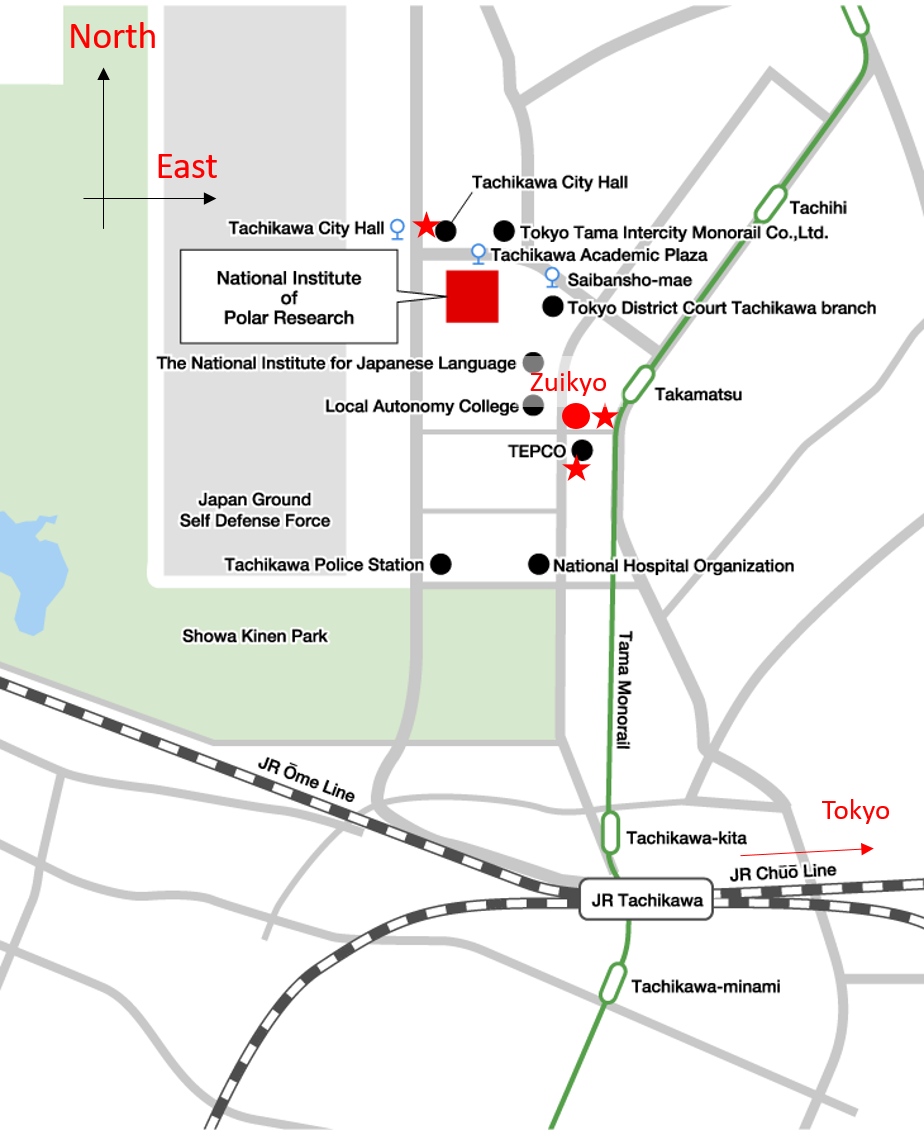
Weather in Tokyo
Daily forcast: Japan Meteorological Agency
3-hourly forcast: BBC Weather
Statistics: yr.no

